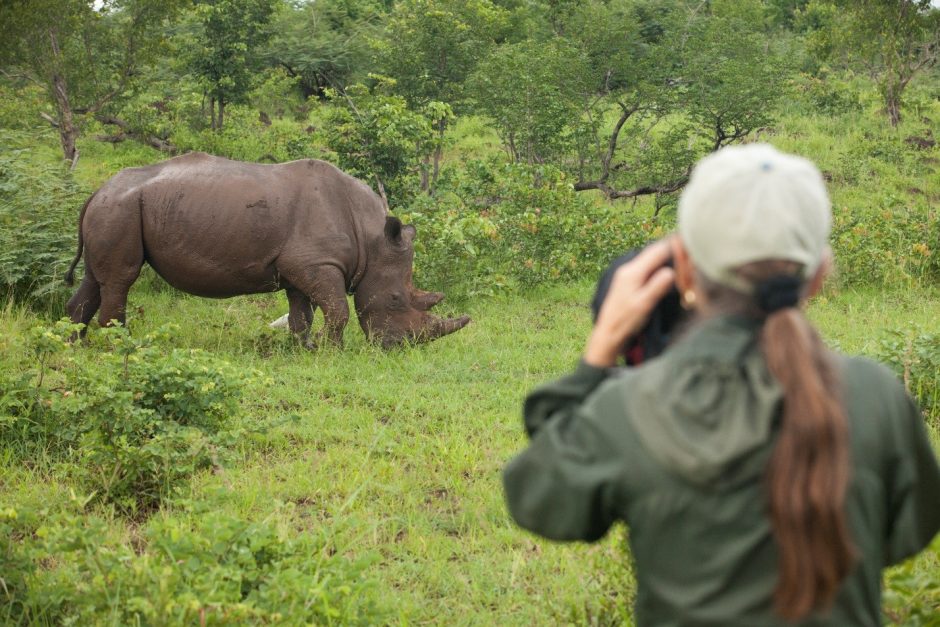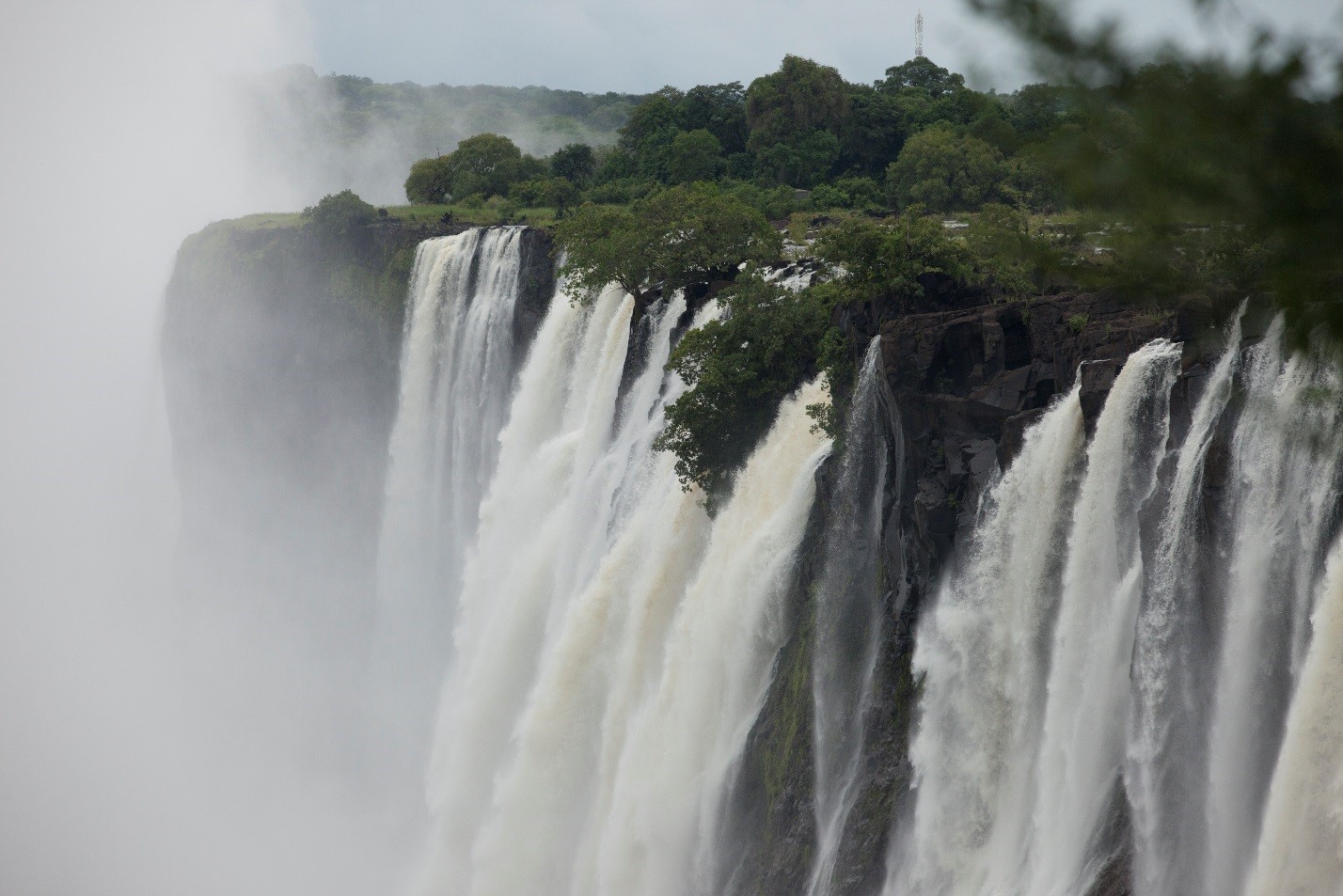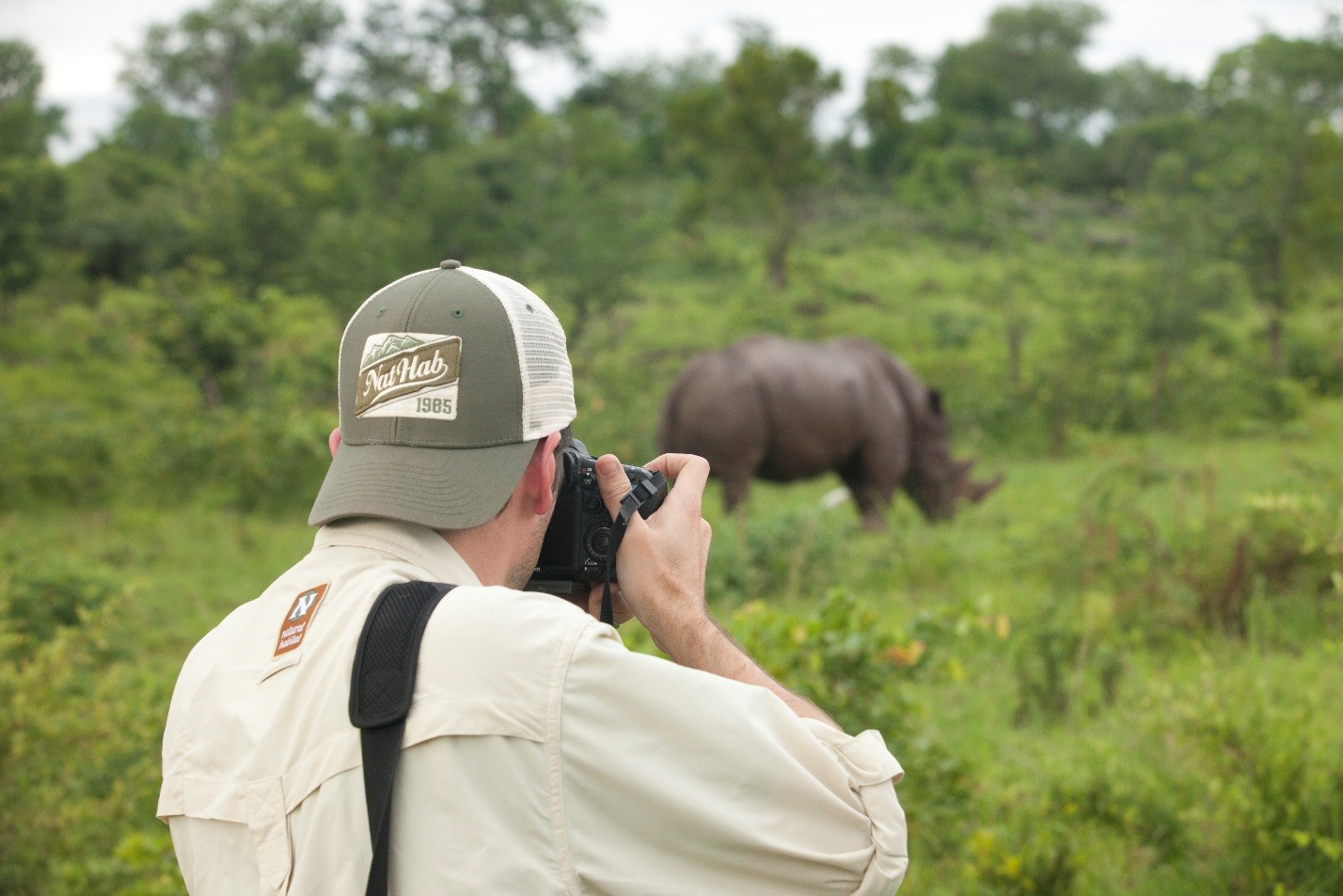
Stories from the Field – Rhino Tracking in Zambia
There are no two ways about it, if you want to go see big wildlife, and lots of it, with superb photographic opportunities, a photo safari to Africa during the green season should be your #1 choice. While traditional safaris are done via game drives in 4×4 vehicles, there are some special places where you can be on the ground with the world’s most magnificent animals.
This story begins in Zamiba, in the Livingstone region, where a special National Park exists, names Mosi oa Tunya. Meaning the “smoke that thunders”, for the powerful force and spray of the nearby Victoria Falls. While the great falls is no doubt the number one attraction in the area, a lesser known and lesser visited area could give you the photo opportunity of a lifetime.

As we set out from Toka Leya camp, we crossed through the main gate of the park to meet with local rangers, ready to take us on our rhino trek. Of course we were all filled with wonder and excitement, but it’s hard to describe the feeling of getting your first glimpse of a massive rhino on foot. I’ve seen them many times from the raised bed of a safari vehicle, giving me another 3 feet off the ground. However, when on their turf, they look quite a bit bigger.
The story behind this cover photo, of the woman photographing the rhino, is our first moments after watching this amazing animal emerge from the brush and graze on the grasses of the forest floor. I knew this was going to be a special shot, and while relatively simple, there were a few key considerations. The first thing to think about is where to focus – do you focus on the person or the animal? There is no rule, necessarily, but keep in mind that whatever you choose to focus on is where the viewers’ eyes will go towards. That which is blurred is really not the “subject” of the photo, but rather an ancillary part that helps give context. In this case, I wanted to feature the rhino, and use the woman as a surrogate for myself, showing where we were photographing from – close!
Next, you have to decide exactly how much blur to give to this “ancillary subject” – the woman. Choosing a shallow depth of field is key, but at the same time, you do have choices. Too shallow could have meant that the woman wouldn’t even be discernible as a person…just a blurred swath of color. On the contrary, if everything was in focus, it would be distracting, as you’d basically have two subjects, since both the woman and the rhino would be in focus. Thus, I’m telling the viewer to look at the rhino, and by using a moderate depth of field of f/5.6, she’s just enough blurred to still be a significant part of the photo, just clearly not the subject.
As we all stood there, experimenting with different camera settings, we tried different depths of field, different compositions, and different focus points. You can see from below the result of focusing instead on the photographer, with the rhino blurred.

The key to this above photo is getting the right “profile” of the rhino. Since the rhino is blurred, the distinctive shape with arched back, dark ear, and two horns, has to still be prominently visible, otherwise it really wouldn’t work. The viewer of your photo may not be able to tell it’s a rhino they’re looking at.
I have to say, this is still one of the more amazing single wildlife encounters I’ve had in my life. If you’ve ever considered creating your own story of such an encounter, be sure Africa in the green season is on your list!
Go forward and give it a shot,
2 Comments

Doug Marshall
July 1, 2022 at 6:05 am

Court Whelan, Ph.D.
July 10, 2022 at 9:30 am
Thanks Court! We are heading there in 2 weeks with Nat Hab “Secluded Botswana”. We too have viewed these magnificent animals from a vehicle and when I first read that we would be taking a walk to view rhinos I thought I had read it wrong! What a fantastic opportunity. Thanks for the tips. Will a 40-150mm f2.8 mft lens be long enough for this walk or should I carry something longer?
hi Doug, I’m so glad to hear you’re headed over to Africa soon! When you say a 40-150mm, I presume that’s on the olympus 4/3s system? Thus, this is effectively an 80-300 f/2.8. This is a GREAT range, and the f/2.8 is going to be brilliant at 300mm. While you may wish you had a 400mm at times (or larger) there is always the saying that you can never have “enough” telephoto. 300mm is a tad light for a big photo safari, but the fact that it’s f/2.8 is magical. It really makes up for the slight lack of zoom/telephoto. Olympus makes a stunning 300mm f/4 which you may want to consider. It’s another expense and another thing to pack, but most wildlife photographers on the Olympus system swear by this one :). Hope you enjoy the adventure!!